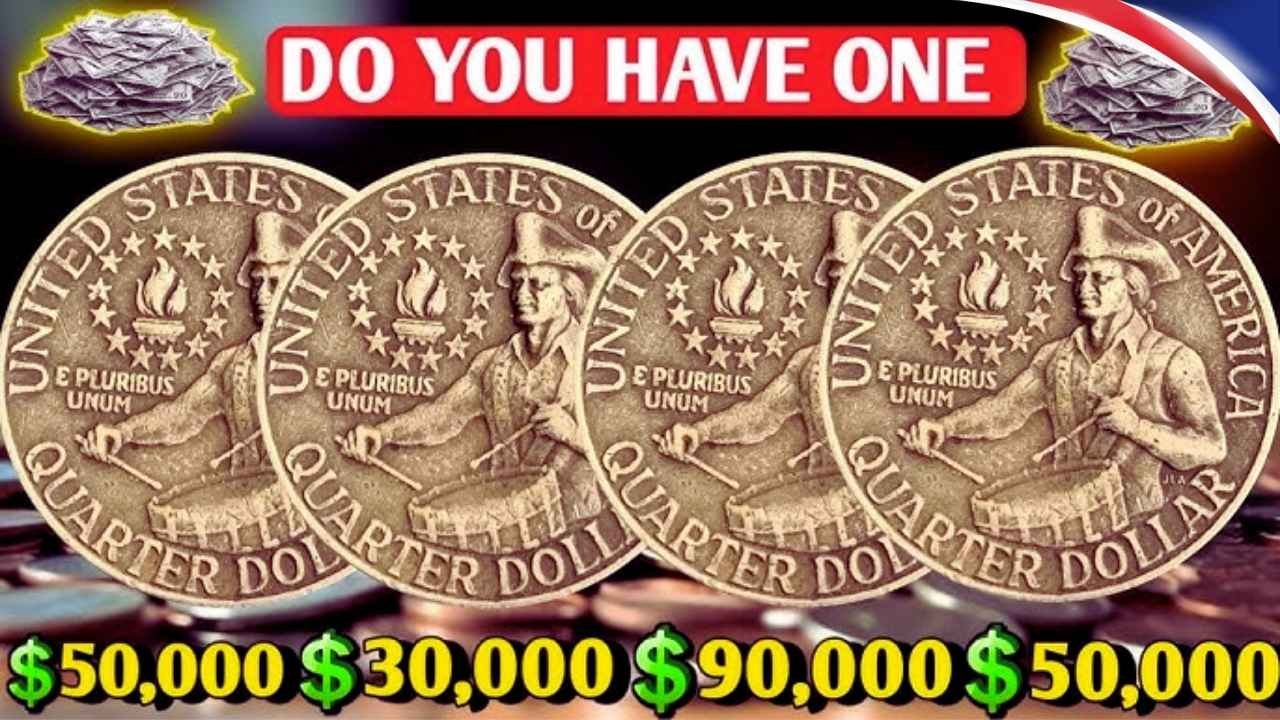The Rare Bicentennial Quarter Valued at $2.5 Billion : In 1976, the United States minted special quarters to celebrate 200 years of independence, known as Bicentennial Quarters. These coins, with a colonial drummer and torch on the back, are still common today, usually worth just 25 cents. But whispers of an ultra-rare version, possibly valued at a staggering $2.5 billion, have collectors and everyday folks checking their change. This coin, tied to unique minting errors or special metals, might still be out there in wallets or piggy banks. Here’s what you need to know about this legendary treasure.
A Coin with a Special Story
The Bicentennial Quarter was made in huge numbers, over 1.6 billion, to mark America’s 200th birthday. Instead of the usual eagle, it features a drummer boy and the dates 1776-1976. Most are just pocket change, but a few are said to be extraordinary due to mistakes made at the U.S. Mint. Some sources claim one rare coin, possibly struck with a gold-platinum mix or a double-die error, could fetch billions if found. While the $2.5 billion price tag sounds like a tall tale, it’s sparked a frenzy among coin hunters.
Why Is This Quarter So Special?
What makes this coin worth so much? It’s all about rare errors or unique materials. Some reports suggest a tiny batch was accidentally made with a gold-platinum alloy, far pricier than the usual copper-nickel mix. Others point to minting errors, like a double-die strike, where the design looks doubled on words like “LIBERTY” or the date. These quirks, combined with the coin’s history, could make it one of the most valuable ever. But no official sale has confirmed that $2.5 billion figure, so it’s still a bit of a mystery.
Could It Really Be in Your Change?
The idea that a $2.5 billion coin is still floating around is thrilling. Since Bicentennial Quarters are still in circulation nearly 50 years later, it’s possible one could turn up in your change from a store or an old jar. Experts say the odds are slim, but stories of rare coins found in everyday places keep the dream alive. For example, a 1913 Liberty Head nickel, worth millions, was once found in a family stash. So, it’s worth a quick look at those quarters in your pocket.
How to Spot the Rare Coin
If you want to check your quarters, here are some tips to spot a potential gem:
- Look at the color: Regular quarters are dull silver, but a rare one might have a golden shine from a gold-platinum mix.
- Check the weight: A normal quarter is about 5.67 grams; one made with precious metals could be heavier.
- Try a magnet: Copper-nickel quarters stick slightly to magnets, but gold-platinum ones won’t.
- Look for doubling: Check for blurry or double images on “LIBERTY” or “1776-1976.”
- Get it checked: Only a pro grader, like PCGS or NGC, can confirm if it’s the real deal.
| Feature | Normal Quarter | Rare Quarter |
|---|---|---|
| Metal Color | Dull silver | Golden shine |
| Weight | 5.67 grams | Heavier |
| Magnet Test | Slightly magnetic | Non-magnetic |
Other Valuable Bicentennial Quarters
Even if you don’t find the $2.5 billion coin, other rare Bicentennial Quarters can still bring big money. The 1976-S Silver Proof Quarter, made with 90% silver for collectors, can sell for thousands if in top shape. The 1976-D Double Die Obverse, with visible doubling, might fetch tens of thousands. Even clad error coins, where metal layers didn’t bond right, can be worth a lot. These coins are rare but far more common than the fabled billion-dollar one.
Keep Your Eyes Open
While the $2.5 billion price might be more legend than fact, the excitement around this coin shows how a small piece of change can hold big secrets. Check your quarters at flea markets, bank rolls, or old collections. If you think you’ve got something special, don’t clean it; get it to a professional for grading. Whether it’s worth billions or just a few thousand, the Bicentennial Quarter reminds us that treasures might be hiding in plain sight. So, next time you get change, take a second look you might just be holding a fortune.
